The horse has been for more than 6000 years close part of human civilization in regard to transport by land – since travel is defining the feature of progress. Before the development of the steam locomotive in the early 1800s and later cars, the only way to travel on land faster than human pace was by horse.
Although horse evolved from smaller, dog-sized extinct Hyracotherium over 45 to 55 million years, Humans began to domesticate horses around 4000 BC, and their domestication is believed to have been widespread by 3000 BC: some first notions of domestication were probably on the steppes of southern Russia and Kazakhstan, and introduced to the Ancient Near East in about 2300 BC. Before this time, people used donkeys, different animals from the cattle family (Bovidae) or other animals (dromedary, lama and other cameleids, elephants - animals which would get domesticated and not to kill owner during work) as draught animals and beasts of burden. The British Museum held the exhibition in 2012 titled: The horse: from Arabia to Royal Ascot where they write that: ''The adoption of the horse was one of the single most important discoveries for early human societies. Horses and other animals were used to pull wheeled vehicles, chariots, carts and wagons and horses were increasingly used for riding ...'' as well horses were of important use in war depending on the form of warfare. The type used varied with whether the horse was being ridden or driven, and whether they were being used for reconnaissance, cavalry charges, raiding, communication, or supply. In non-nomadic societies horses were also throughout history restricted to the upper classes as the status symbol. The symbolic meaning of horse in used in many religious and other spiritual rituals: in Christian religion horse is an attribute of Saint George, killing a dragon with a spear.
Links:
http://blog.britishmuseum.org/2012/05/22/horses-and-human-history/
http://www.academia.edu/9849038/A_Different_sort_of_Horse_Power_The_development_of_the_horse_as_a_status_symbol_in_the_late_Middle_Ages
horse on Wiki:
https://en.wikipedia.org/wiki/Horse
https://en.wikipedia.org/wiki/History_of_horse_domestication_theories
https://en.wikipedia.org/wiki/Horses_in_warfare
Down are some representations of horse through history:
Horse sculpture from ivory (Paleolithic, Espélugues cave, photo: Guérin Nicolas)
Cave painting of a dun horse (equine) (15.284 BC, Lascaux; photo: bucks.instructure.com)
Ashurbanipal (668 BC – cca. 627 BC, The British Museum)
Oxus chariot model, from the region of Takht-i Kuwad, Tadjikistan, Achaemenid Persian, 5th-4th century BC. British Museum (1897,1231.7).
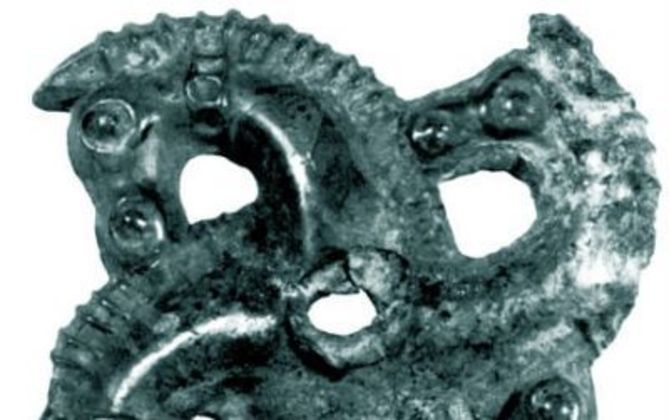
Situla from Vače, 5th century BC. Slovenian National Museum (1882; photo: Mirko Pukl)

A manuscript illustration of the Battle of Kurukshetra, fought between the Kauravas and the Pandavas, recorded in the Mahābhārata, early 18th century (cca 3102 BCE)
Ivan Meštrović: The Bowman and The Spearman (1928, intersection of Congress Parkway and Michigan Avenue in Grant Park, Chicago, United States; photo: Globus Zagreb, pages: 194/195)
Ewald Mataré: Finnish horse (1929-30, photo: Lempertz)
Sayaka Ganz: Dusk and Dawn (2013, copyright: Sayaka Ganz)
Fernando Botero: Horse (2014, copyright: Curiator)
Although horse evolved from smaller, dog-sized extinct Hyracotherium over 45 to 55 million years, Humans began to domesticate horses around 4000 BC, and their domestication is believed to have been widespread by 3000 BC: some first notions of domestication were probably on the steppes of southern Russia and Kazakhstan, and introduced to the Ancient Near East in about 2300 BC. Before this time, people used donkeys, different animals from the cattle family (Bovidae) or other animals (dromedary, lama and other cameleids, elephants - animals which would get domesticated and not to kill owner during work) as draught animals and beasts of burden. The British Museum held the exhibition in 2012 titled: The horse: from Arabia to Royal Ascot where they write that: ''The adoption of the horse was one of the single most important discoveries for early human societies. Horses and other animals were used to pull wheeled vehicles, chariots, carts and wagons and horses were increasingly used for riding ...'' as well horses were of important use in war depending on the form of warfare. The type used varied with whether the horse was being ridden or driven, and whether they were being used for reconnaissance, cavalry charges, raiding, communication, or supply. In non-nomadic societies horses were also throughout history restricted to the upper classes as the status symbol. The symbolic meaning of horse in used in many religious and other spiritual rituals: in Christian religion horse is an attribute of Saint George, killing a dragon with a spear.
Links:
http://blog.britishmuseum.org/2012/05/22/horses-and-human-history/
http://www.academia.edu/9849038/A_Different_sort_of_Horse_Power_The_development_of_the_horse_as_a_status_symbol_in_the_late_Middle_Ages
horse on Wiki:
https://en.wikipedia.org/wiki/Horse
https://en.wikipedia.org/wiki/History_of_horse_domestication_theories
https://en.wikipedia.org/wiki/Horses_in_warfare
Down are some representations of horse through history:
Horse sculpture from ivory (Paleolithic, Espélugues cave, photo: Guérin Nicolas)
Cave painting of a dun horse (equine) (15.284 BC, Lascaux; photo: bucks.instructure.com)
Ashurbanipal (668 BC – cca. 627 BC, The British Museum)
Oxus chariot model, from the region of Takht-i Kuwad, Tadjikistan, Achaemenid Persian, 5th-4th century BC. British Museum (1897,1231.7).


A manuscript illustration of the Battle of Kurukshetra, fought between the Kauravas and the Pandavas, recorded in the Mahābhārata, early 18th century (cca 3102 BCE)
Magdeburg rider (1240)
Étienne Maurice Falconet: Monument to Peter the Great (1768 - 1782, Saint Petersburg, photo: Godot13)
Jacques-Louis David: Napoleon Crossing the Alps (1801; Château de Malmaison, Rueil-Malmaison)
Edgar Degas: Jockeys before the race - detail (1879, copyright The Barber - Institute of Fine Arts)
Edgar Degas: modeled wax sketch Thoroughbred Horse Walking (1881, The Metropolitan Museum of Art)
Pablo Picasso: Jeune garçon au cheval (1905-06, Copyright: Museum of Modern Art, New York City)
Raymond Duchamp-Villon: Large Horse (1914, cast 1961, copyright: Tate)
Hinko Smrekar: illustration for the book Martin Krpan (1917, Knjižnica Mirana Jarca Novo mesto)
Edgar Degas: Jockeys before the race - detail (1879, copyright The Barber - Institute of Fine Arts)
Edgar Degas: modeled wax sketch Thoroughbred Horse Walking (1881, The Metropolitan Museum of Art)
Pablo Picasso: Jeune garçon au cheval (1905-06, Copyright: Museum of Modern Art, New York City)
Raymond Duchamp-Villon: Large Horse (1914, cast 1961, copyright: Tate)
Hinko Smrekar: illustration for the book Martin Krpan (1917, Knjižnica Mirana Jarca Novo mesto)
Ivan Meštrović: The Bowman and The Spearman (1928, intersection of Congress Parkway and Michigan Avenue in Grant Park, Chicago, United States; photo: Globus Zagreb, pages: 194/195)
Ewald Mataré: Finnish horse (1929-30, photo: Lempertz)
Lojze Dolinar: Peter I. Karadjordjević "Osvoboditelj" (1931, Ljubljana Town Hall, archive from RTV)
Pablo Picasso: Guernica (1937, copyright: Museo Reina Sofia, Madrid, Spain) - see also book by Tomaž Brejc: Guernica
Pablo Picasso: Guernica (1937, copyright: Museo Reina Sofia, Madrid, Spain) - see also book by Tomaž Brejc: Guernica
Lojze Dolinar: Aleksander I. Karadjordjević Zedinitelj (1940, Tivoli / Kongres square, Ljubljana, archive Stare razglednice)
Marino Marini: Angel of the Citadel (1948-9, Guggenheim Museum, Venice; photo: blogs.artinfo.com)
Alberto Giacometti: Cheval (1960, photo: BizArt)
Zoran Music: Dalmatinski konji (1963, Moderna gallery Ljubljana, Slovenia)
the largest bas-relief in the world - the carving depicts three Confederate figures during the Civil War: Stonewall Jackson, Robert E. Lee, and Jefferson Davis (1972, Stone Mountain Park in Stone Mountain, Georgia, USA; photo: Jim Bowen)
Damien Hirst: Sliced horse (from film In the Cell 1996, photo on: horrordigest)
Alberto Giacometti: Cheval (1960, photo: BizArt)
Zoran Music: Dalmatinski konji (1963, Moderna gallery Ljubljana, Slovenia)
the largest bas-relief in the world - the carving depicts three Confederate figures during the Civil War: Stonewall Jackson, Robert E. Lee, and Jefferson Davis (1972, Stone Mountain Park in Stone Mountain, Georgia, USA; photo: Jim Bowen)
Damien Hirst: Sliced horse (from film In the Cell 1996, photo on: horrordigest)
Lujo Vodopivec: Fontana s konjički (1997, Grand hotel Union, photo: Boris Beja/planet Siol)
Andy Scott: Heavy Horse (1997, copyright: Andy Scott)
Andy Scott: Heavy Horse (1997, copyright: Andy Scott)
Jakov Brdar: Monument to Rudolf Maister (1999, Liberation Front Square, Ljubljana, photo: Ljubljana)
Bojan Putrih: Monument to Rudolf Maister (1999, Ministry of Defence, Ljubljana)
Jeonghwa Choi: Flower Horse (2008, Art Museum Center Aomori Towad, Japan; photo: welovehorses)
Xavier Veilhan: Red horse (2009, copyright Xavier Veilhan)
Damien Hirst: Legend and Myth (2011, photo: arrestedmotion)
Susan Leyland: Oak & Cypress (2012, copyright: Susan Leyland)
Bojan Putrih: Monument to Rudolf Maister (1999, Ministry of Defence, Ljubljana)
Jeonghwa Choi: Flower Horse (2008, Art Museum Center Aomori Towad, Japan; photo: welovehorses)
Maurizio Cattelan: (photo: welovehorses)
Xavier Veilhan: Red horse (2009, copyright Xavier Veilhan)
Damien Hirst: Legend and Myth (2011, photo: arrestedmotion)
Susan Leyland: Oak & Cypress (2012, copyright: Susan Leyland)
Sayaka Ganz: Dusk and Dawn (2013, copyright: Sayaka Ganz)
Fernando Botero: Horse (2014, copyright: Curiator)













.jpg)

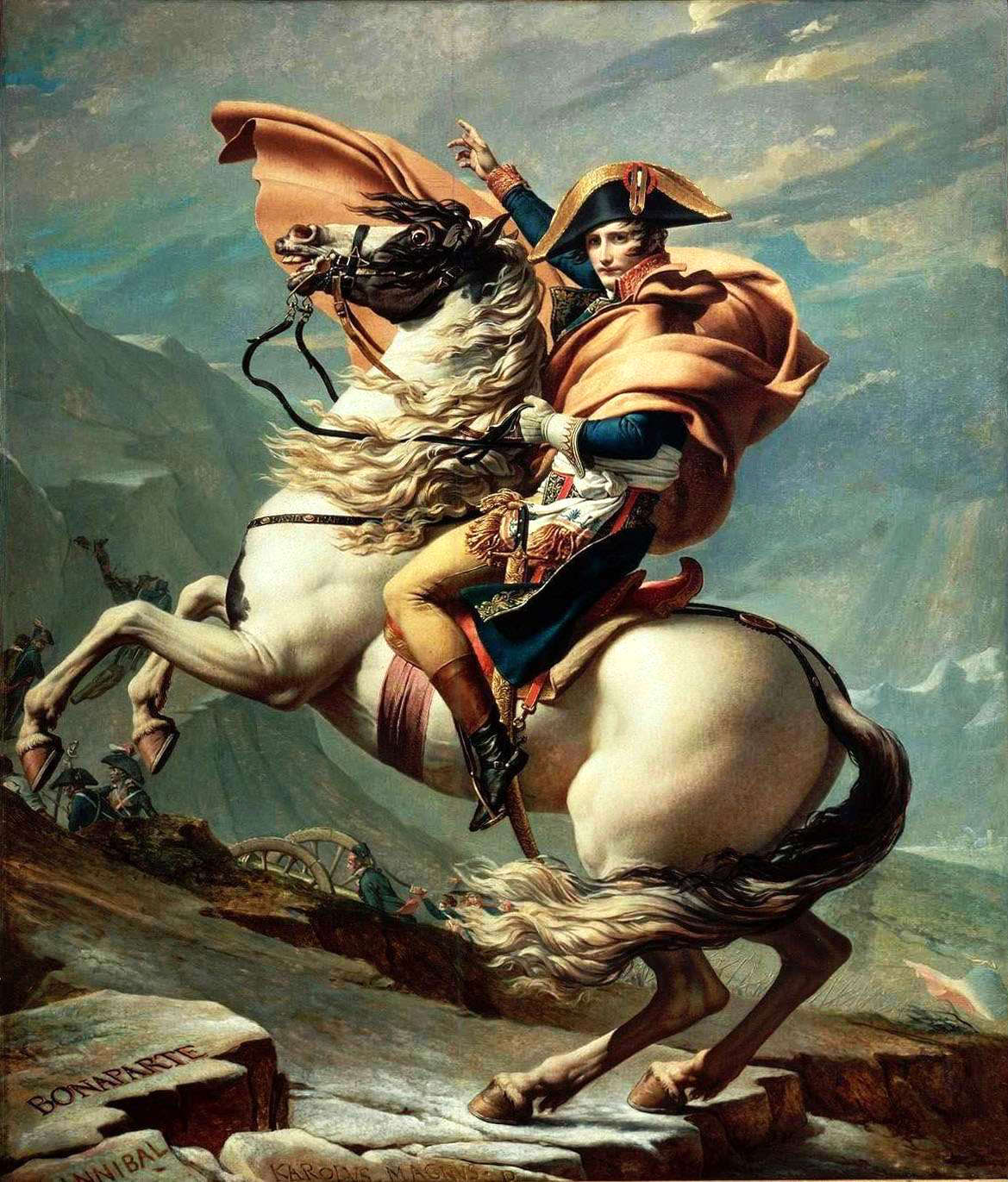
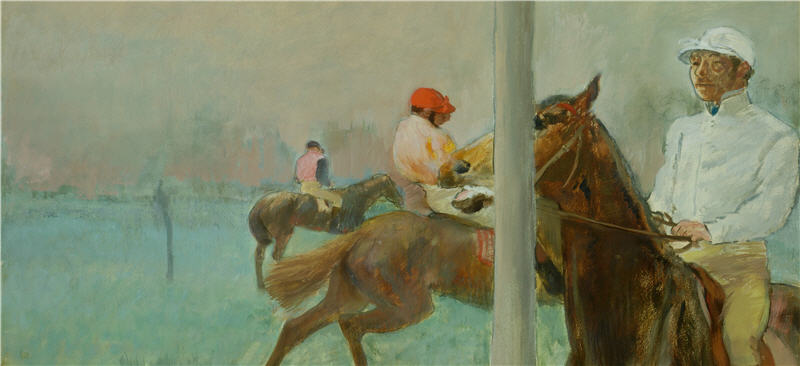

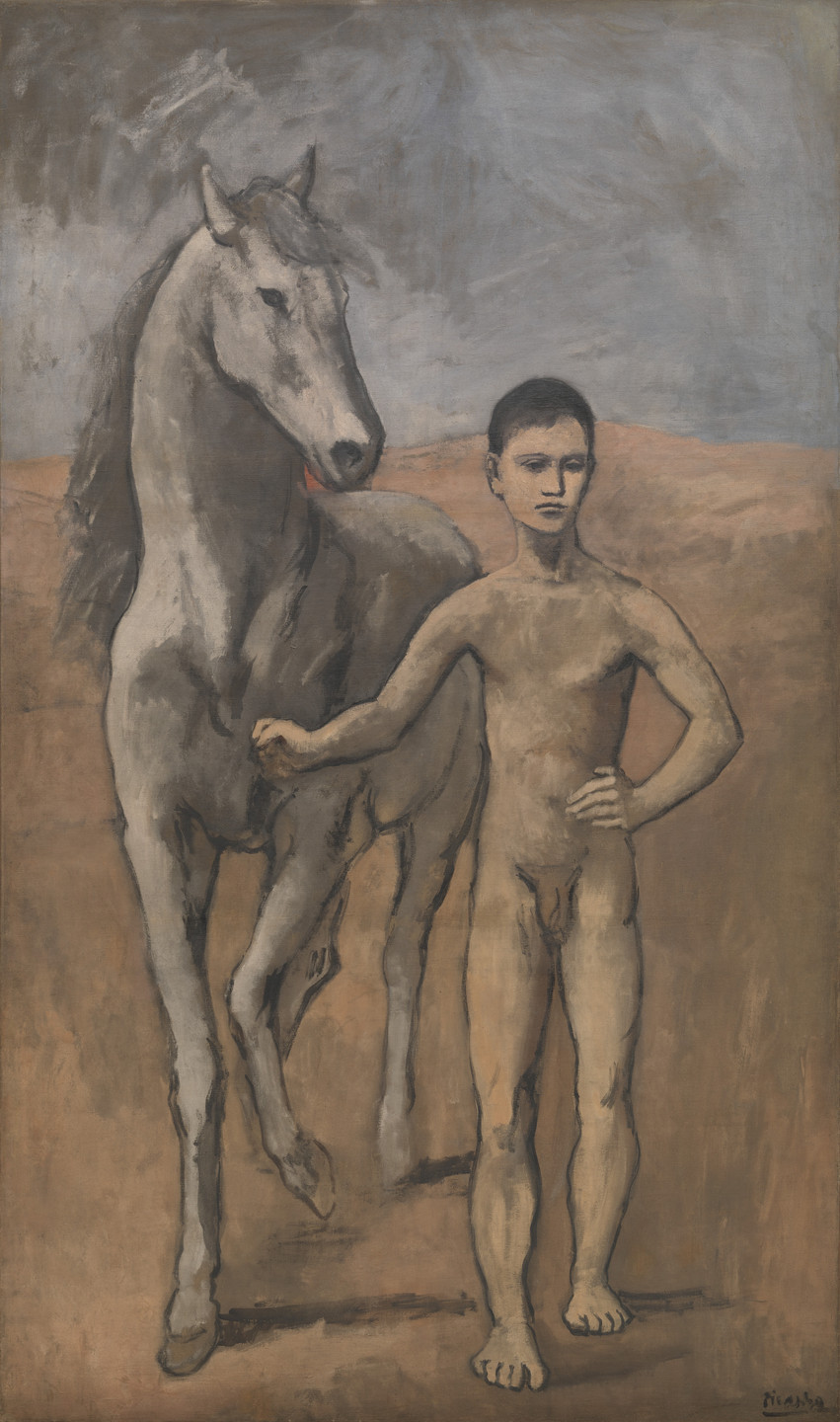




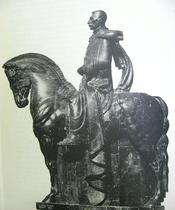






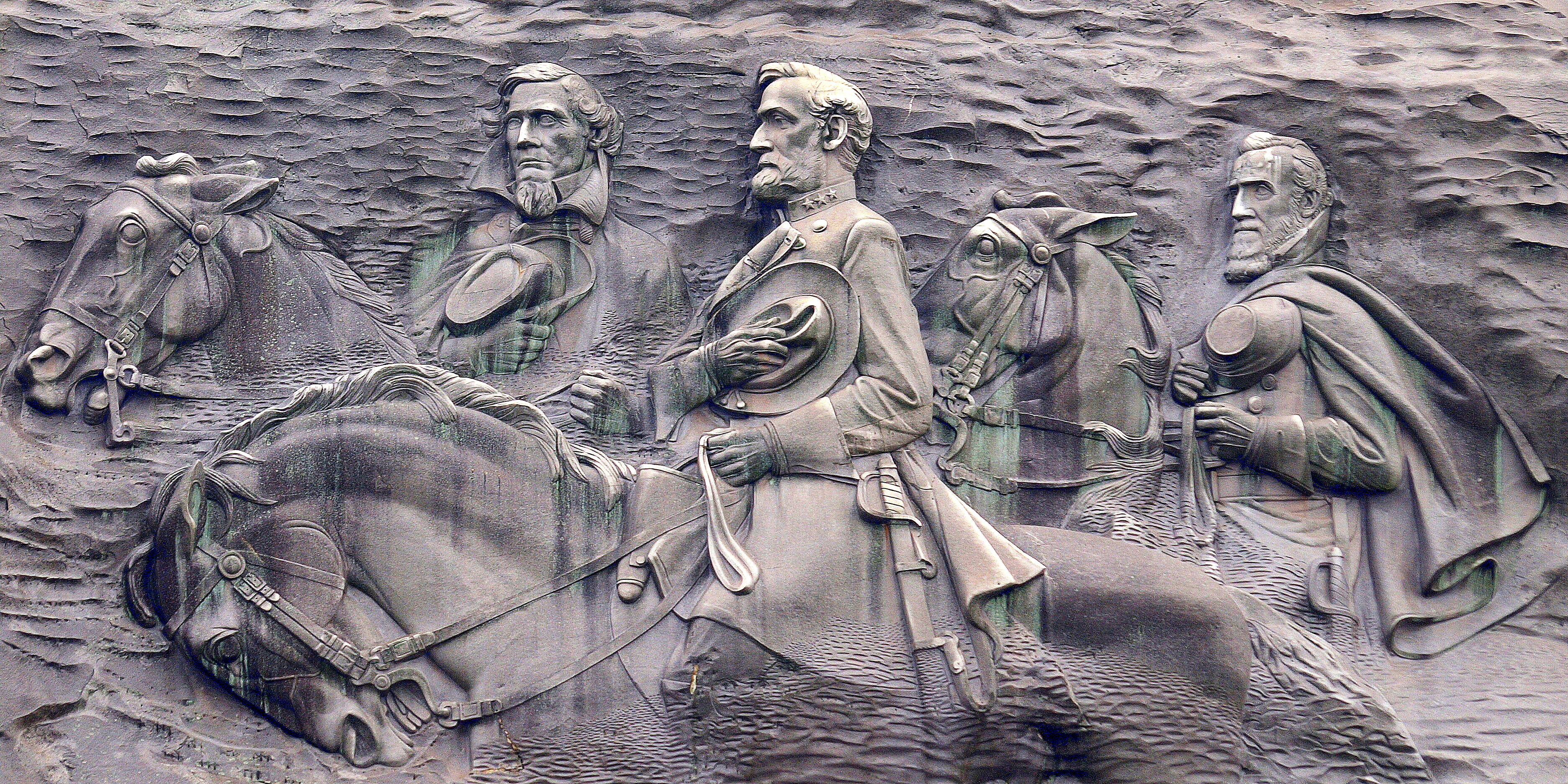








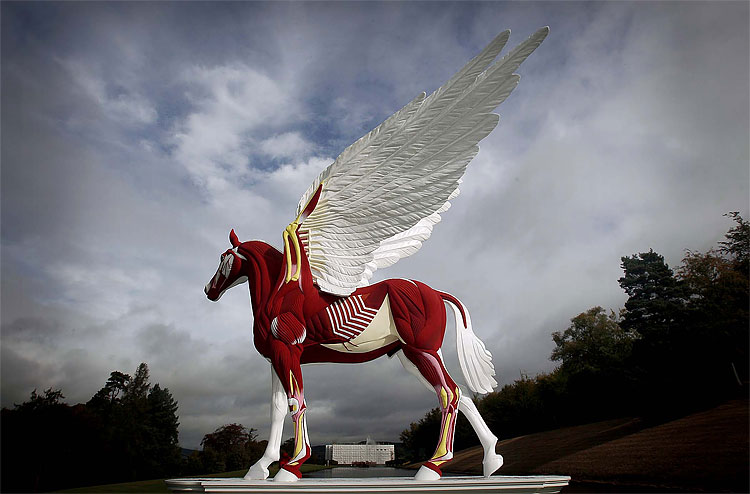
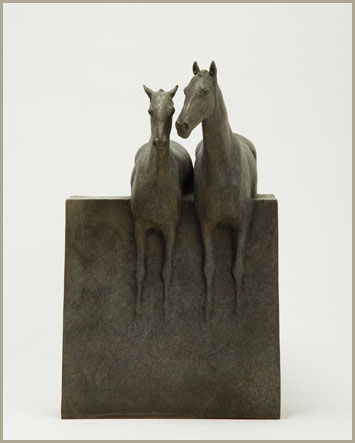


Nice pictorial timeline of horse art! Ours will shadow all of those of course.
ReplyDeleteOf course ;) we are creating life not an image
DeleteWhile completely accepting the concept that all the life forms which make up the planet , are of equal value , I am puzzled as to why you would use horse meat as opposed to the more obvious use of horse excrement to produce horse power for your robotic horse !
ReplyDeleteEnergy harvesting in body level is interesting in all aspects indeed and also there are numerous varieties. To chose the most difficult one is maybe also connected to one of the general idea of this art project: value shifting. Same object is perceived as flesh or meat. Meat is no longer living flesh. It has price but not value as life has. Amount of meat is not used and it has to be removed by burning. Not just energy is wasted also there is amount of pollution involved. With meat powered battery maybe there is not enormous amount of energy, but I hoped it might has some reflection of the idea of valuing of life forms.
ReplyDelete